When it comes to cutting brick with precision and efficiency, using a circular saw is a game-changer. In this article, we will explore the topic of how to cut brick with a circular saw and why it is a valuable method for both professionals and DIY enthusiasts. By understanding the benefits and following essential safety precautions, you can master this technique and achieve excellent results.
Cutting brick with a circular saw offers several advantages over alternative methods. Firstly, it allows for clean and accurate cuts, ensuring the bricks fit together seamlessly during construction or renovation projects. The circular saw’s powerful motor and sharp blade enable it to effortlessly slice through brick, saving both time and effort compared to manual methods like chiseling or using a handheld saw.
However, it’s important to prioritize safety when working with power tools. Before diving into the process, it is crucial to familiarize yourself with the necessary precautions. Wearing appropriate personal protective equipment (PPE), such as goggles to shield your eyes from debris, gloves for hand protection, and ear protection to minimize noise, is essential. Additionally, following proper operating procedures and maintaining a safe distance from the blade will reduce the risk of accidents or injuries.
Now that we understand the significance of using a circular saw for cutting brick and the importance of safety, let’s delve into the specifics of this method. By following the subsequent sections of this article, you will gain a comprehensive understanding of how to cut brick with a circular saw while maintaining a safe and efficient workflow.
Understanding the Basics of Cutting Brick with a Circular Saw:
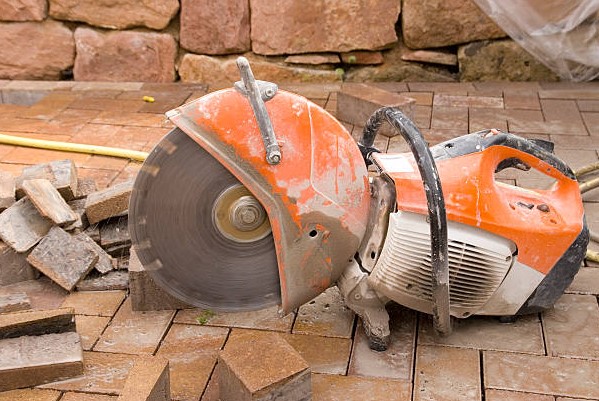
When it comes to cutting brick with precision and ease, a circular saw is a versatile and powerful tool. Let’s explore the fundamentals of cutting brick with a circular saw, its suitability for this task, and the advantages it offers over other tools.
- Explain the concept of cutting brick with a circular saw: Cutting brick with a circular saw involves using a rotating blade with sharp teeth to make clean and precise cuts through the brick material. The circular saw’s motor powers the blade’s rotation, allowing it to effortlessly slice through the brick’s tough surface.
- Discuss the suitability of circular saws for cutting brick: Circular saws are highly suitable for cutting brick due to their robust construction and adjustable cutting features. The powerful motor of a circular saw generates enough torque to cut through the dense material of bricks efficiently. Additionally, circular saws often have adjustable cutting depths and angle settings, allowing for versatile cuts required in brickwork.
- Highlight the advantages of using a circular saw over other tools:
a. Speed and efficiency: Circular saws excel in terms of speed and efficiency when it comes to cutting brick. The sharp and rapidly rotating blade makes quick work of the material, enabling you to complete projects in less time.
b. Accuracy and precision: Circular saws provide precise cuts, ensuring clean and straight edges on the brick. This level of accuracy is particularly important when working on projects that demand precise measurements and tight fits, such as building walls or installing brick pavers.
c. Versatility: Circular saws are versatile tools that can handle various cutting tasks beyond brick. With the right blade, they can be used for cutting other materials like wood, metal, or concrete, making them a valuable addition to any toolkit.
d. Control and ease of use: Circular saws are designed with user control in mind. They often feature ergonomic handles and adjustable cutting settings, allowing you to maintain control over the cutting process and achieve the desired results with minimal effort.
e. Efficiency in handling larger projects: When working on larger brick projects, such as constructing a wall or laying a pathway, a circular saw can significantly increase productivity. Its speed and cutting capabilities make it a preferred choice for handling substantial quantities of brick.
By understanding the concept of cutting brick with a circular saw, recognizing its suitability for this task, and appreciating the advantages it offers over other tools, you can confidently proceed with the cutting process. In the following sections, we will delve into the specific tools, techniques, and safety measures necessary for achieving optimal results when using a circular saw to cut brick.
Essential Tools and Materials:
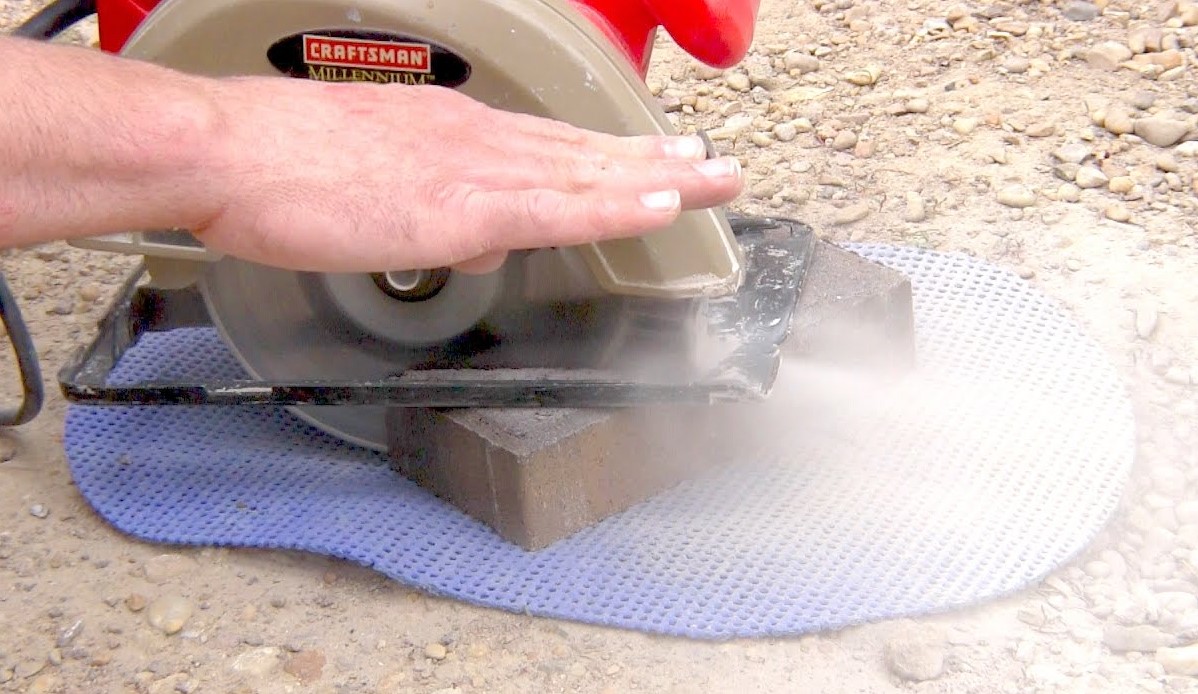
To effectively cut brick with a circular saw, it is essential to gather the necessary tools and materials. This section will provide you with a comprehensive list of items required for the task, including safety equipment and suitable blades.
List of necessary tools and materials:
- Circular saw: Choose a high-quality circular saw with a sturdy construction and a motor power suitable for cutting brick.
- Bricks: Ensure you have an adequate supply of bricks for your project.
- Measuring tape: Use a measuring tape to accurately measure and mark the bricks for cutting.
- Pencil or marker: Use a pencil or marker to make precise markings on the bricks.
- Straightedge or level: A straightedge or level will help in drawing straight lines for cutting.
- Workbench or sawhorses: Provide a stable work surface to support the bricks during cutting.
- Clamps: Use clamps to secure the bricks in place and prevent movement during cutting.
- Masonry chisel and hammer: These tools are handy for scoring and splitting bricks if needed.
- Dust mask: Protect yourself from inhaling brick dust by wearing a dust mask.
- Broom or vacuum: Clean the work area after cutting to remove brick fragments and dust.
Safety equipment:
- Goggles: Wear safety goggles to shield your eyes from debris and potential splinters.
- Gloves: Protect your hands from sharp edges and enhance grip by wearing sturdy gloves.
- Ear protection: Use ear protection, such as earmuffs or earplugs, to reduce noise exposure.
Types of blades suitable for cutting brick and their specifications:
- Diamond blade: Diamond blades are specifically designed for cutting masonry materials like brick. They have diamond grit embedded in the edge, allowing them to cut through hard materials with precision. Choose a diamond blade labeled for masonry or brick cutting.
- Blade diameter: Circular saw blades come in various sizes, typically ranging from 4 to 7.25 inches for handheld circular saws. Ensure the blade diameter matches your circular saw’s specifications.
- Blade arbor size: The arbor size refers to the diameter of the blade’s mounting hole. Confirm that the blade’s arbor size matches the arbor size of your circular saw to ensure proper installation and secure cutting.
By gathering these essential tools and materials, including safety equipment and the appropriate blade, you will be well-prepared to tackle the process of cutting brick with a circular saw. In the following sections, we will guide you through the necessary steps, safety measures, and techniques for achieving successful brick cuts.
Preparing for the Task:
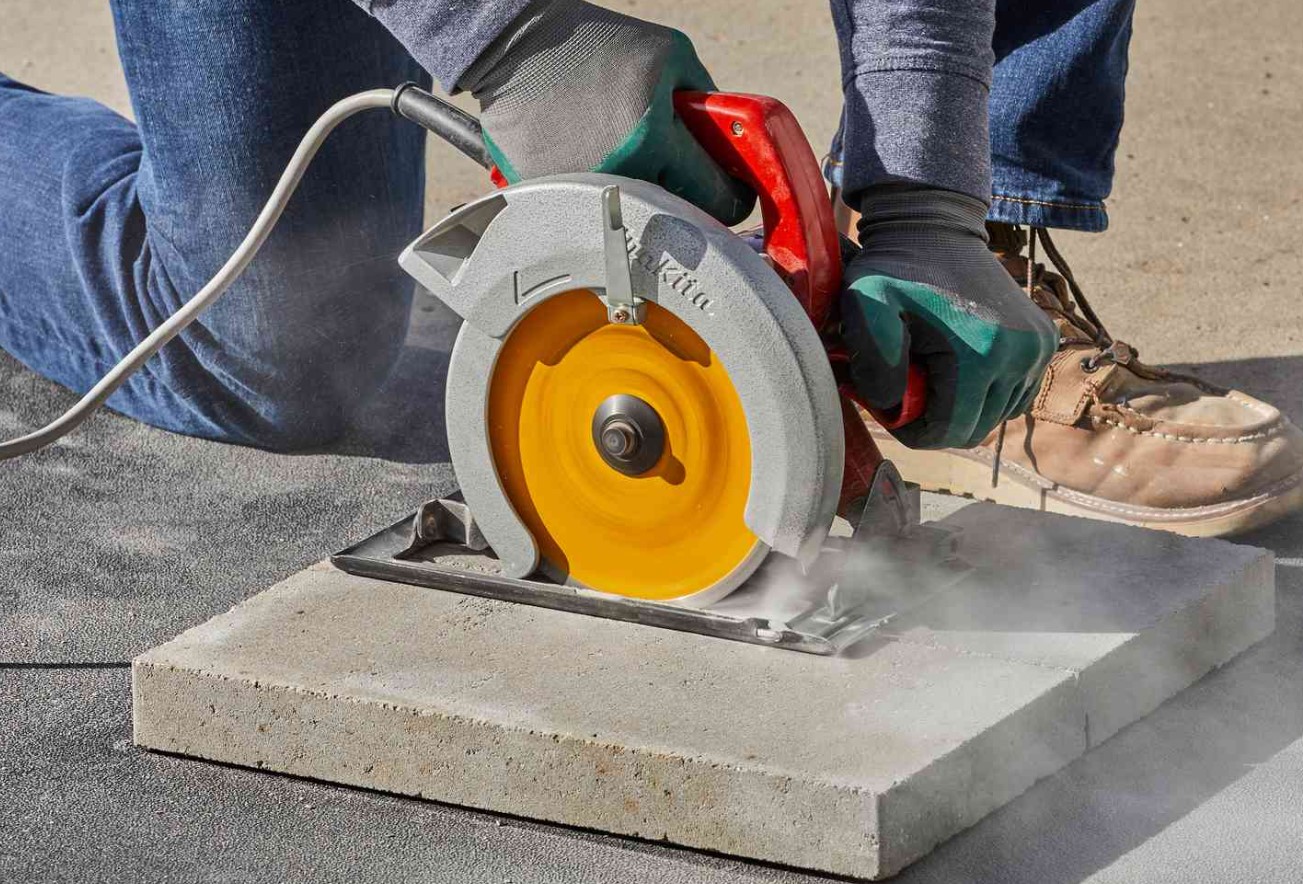
Before diving into cutting brick with a circular saw, it is crucial to adequately prepare the work area and gather the necessary materials. This section will emphasize the importance of preparation, accurate measuring and marking of the bricks, as well as tips for ensuring stability and support during the cutting process.
Importance of preparing the work area and gathering materials: Proper preparation ensures a smooth and efficient cutting process. Here’s why it’s important:
- Safety: Clear the work area of any potential hazards, debris, or tripping hazards. Ensure proper lighting for visibility. Gathering all the necessary tools and materials beforehand minimizes the need for interruptions during the task.
- Accessibility: Arrange the bricks and tools within easy reach to avoid unnecessary movement and bending while cutting.
- Organization: A well-organized work area allows for better focus and efficiency, reducing the likelihood of errors or accidents.
Measuring and marking bricks accurately: Accurate measurements and markings are essential for achieving precise cuts. Follow these steps:
- Measure twice: Use a measuring tape to measure the desired length or size of the brick carefully. Double-check your measurements to ensure accuracy.
- Marking: Use a pencil or marker to mark the measured points on the brick’s surface. Draw straight lines across the brick to indicate the cutting path.
- Straightedge or level: Use a straightedge or level as a guide when drawing straight lines to maintain accuracy.
Tips for ensuring stability and support for the bricks during cutting: It is crucial to stabilize and support the bricks to prevent movement and ensure clean, accurate cuts. Consider the following tips:
- Workbench or sawhorses: Place the bricks on a stable workbench or sawhorses. This provides a secure surface for cutting and prevents the bricks from shifting during the process.
- Clamping: Use clamps to secure the bricks firmly in place, especially for longer or larger bricks. This ensures stability and reduces the risk of the bricks moving during the cutting motion.
- Support the off-cut: When cutting through a brick, ensure that the off-cut section is adequately supported to prevent it from falling and causing damage or injury.
By preparing the work area, gathering the necessary materials, measuring and marking the bricks accurately, and ensuring stability and support, you set yourself up for a more efficient and successful brick cutting experience. In the following sections, we will guide you through the safety measures, step-by-step procedures, and troubleshooting tips for cutting brick with a circular saw.
Safety Measures:
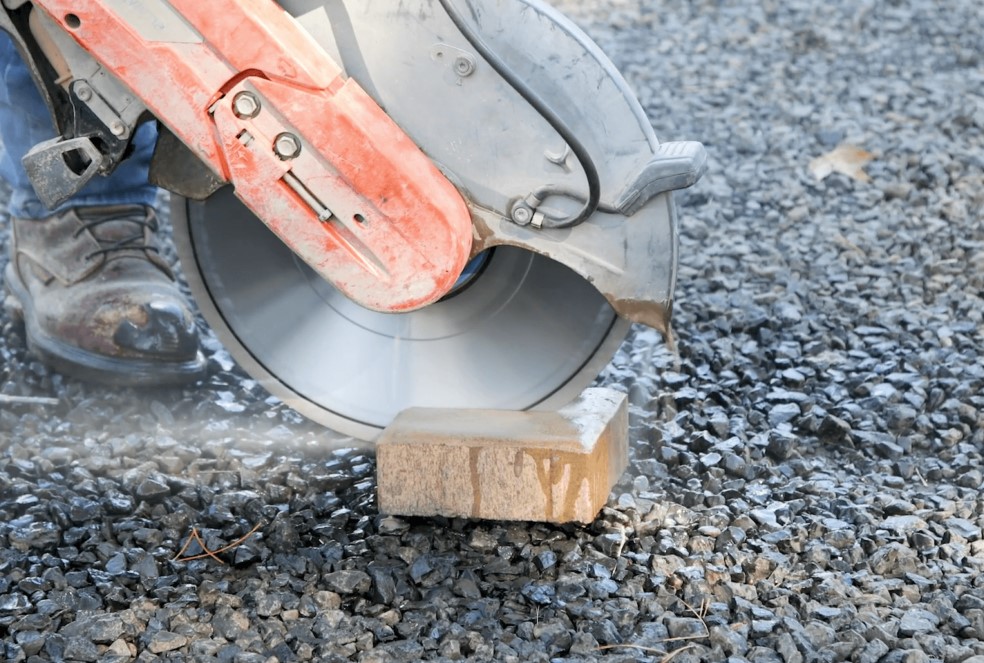
When using a circular saw to cut brick, prioritizing safety is paramount. This section will emphasize the importance of safety measures, discuss the use of personal protective equipment (PPE), and provide guidelines on handling the saw and maintaining a safe distance from the blade.
Emphasizing the importance of safety measures: Working with power tools, including circular saws, requires careful attention to safety. Consider the following measures:
- Prevent accidents: Follow safety guidelines and precautions to minimize the risk of accidents, injuries, and damage to property.
- Personal well-being: Prioritize your well-being by taking necessary safety precautions. Proper safety measures reduce the chance of accidents and potential long-term health risks.
Use of personal protective equipment (PPE): Personal protective equipment is crucial for safeguarding yourself during the cutting process. Wear the following PPE:
- Safety goggles: Protect your eyes from debris, dust, and potential splinters generated during cutting.
- Gloves: Wear sturdy gloves to shield your hands from sharp edges and provide better grip while handling the bricks and circular saw.
- Ear protection: Use earmuffs or earplugs to reduce exposure to the loud noise generated by the circular saw, protecting your hearing.
- Dust mask: Wear a dust mask to prevent inhalation of brick dust, which can irritate the respiratory system.
Guidelines for handling the saw and maintaining a safe distance from the blade: Handling the circular saw properly and keeping a safe distance from the blade is essential for your safety. Consider the following guidelines:
- Familiarize yourself with the saw: Read the manufacturer’s instructions and understand the operating procedures, safety features, and maintenance guidelines specific to your circular saw model.
- Secure grip: Maintain a firm grip on the saw’s handle throughout the cutting process to ensure control and stability.
- Positioning: Position yourself in a way that allows you to maintain balance and control while operating the saw. Stand with your feet shoulder-width apart, maintaining a stable stance.
- Safe distance: Keep a safe distance from the blade at all times. Avoid reaching over the cutting line or placing any body part in the path of the blade.
- Power cord management: Ensure that the power cord is positioned away from the cutting area to prevent accidental contact with the blade.
By emphasizing safety measures, utilizing personal protective equipment (PPE), and following guidelines for handling the saw and maintaining a safe distance from the blade, you can significantly reduce the risk of accidents and ensure a safe cutting experience. In the upcoming sections, we will provide you with a step-by-step procedure for cutting brick with a circular saw while maintaining a focus on safety.
Step-by-Step Procedure for Cutting Brick with a Circular Saw:
To ensure successful and precise cuts when using a circular saw to cut brick, follow this step-by-step procedure. Each step is explained in detail, accompanied by tips and techniques for optimal results.
Setting up the saw and adjusting the blade:
- Ensure the circular saw is in good working condition and the blade is suitable for cutting brick.
- Adjust the cutting depth of the blade to slightly deeper than the thickness of the brick to prevent incomplete cuts.
- Securely tighten the blade onto the saw’s arbor following the manufacturer’s instructions.
Making the necessary markings on the brick:
- Measure and mark the desired cut line on the brick’s surface using a measuring tape, pencil, or marker.
- Use a straightedge or level to draw a straight line across the brick, ensuring accuracy.
Holding the brick securely:
- Place the brick on a stable workbench or sawhorses.
- Use clamps to secure the brick in place, ensuring it remains stable and doesn’t shift during cutting.
- Keep your hands clear of the cutting area and away from the blade.
Positioning the saw and making the initial cut:
- Position the saw’s base plate firmly against the brick, aligning the blade with the marked cut line.
- Hold the saw with a firm grip and engage the trigger to start the blade’s rotation.
- Begin the cut slowly, allowing the blade to gradually penetrate the brick’s surface.
Continuing the cut and maintaining control:
- Maintain a steady forward motion, guiding the saw along the marked cut line.
- Apply gentle and consistent pressure to the saw, allowing the blade to cut through the brick at a controlled pace.
- Keep your focus on maintaining control and stability throughout the cutting process.
Completing the cut and ensuring clean edges:
- Once the blade has cut through the entire thickness of the brick, continue the cutting motion until the saw moves beyond the brick.
- Release the trigger to stop the blade’s rotation and remove the saw from the cut.
- Check the cut for any irregularities or rough edges. If necessary, use a masonry chisel and hammer to refine the edges.
Tips and techniques:
- Use a slow and steady cutting speed to prevent the blade from overheating and minimize vibrations.
- Allow the blade to do the work, avoiding excessive force or pushing on the saw.
- If cutting through multiple bricks, take breaks to allow the blade and saw to cool down.
- Avoid cutting too close to the edges of the brick to prevent potential breakage.
- Always wear the appropriate safety equipment, including goggles, gloves, ear protection, and a dust mask.
By following this step-by-step procedure and incorporating the provided tips and techniques, you can achieve clean, accurate cuts when using a circular saw to cut brick. In the subsequent sections, we will address troubleshooting tips and offer additional guidance for a successful cutting experience.
Troubleshooting and Tips:
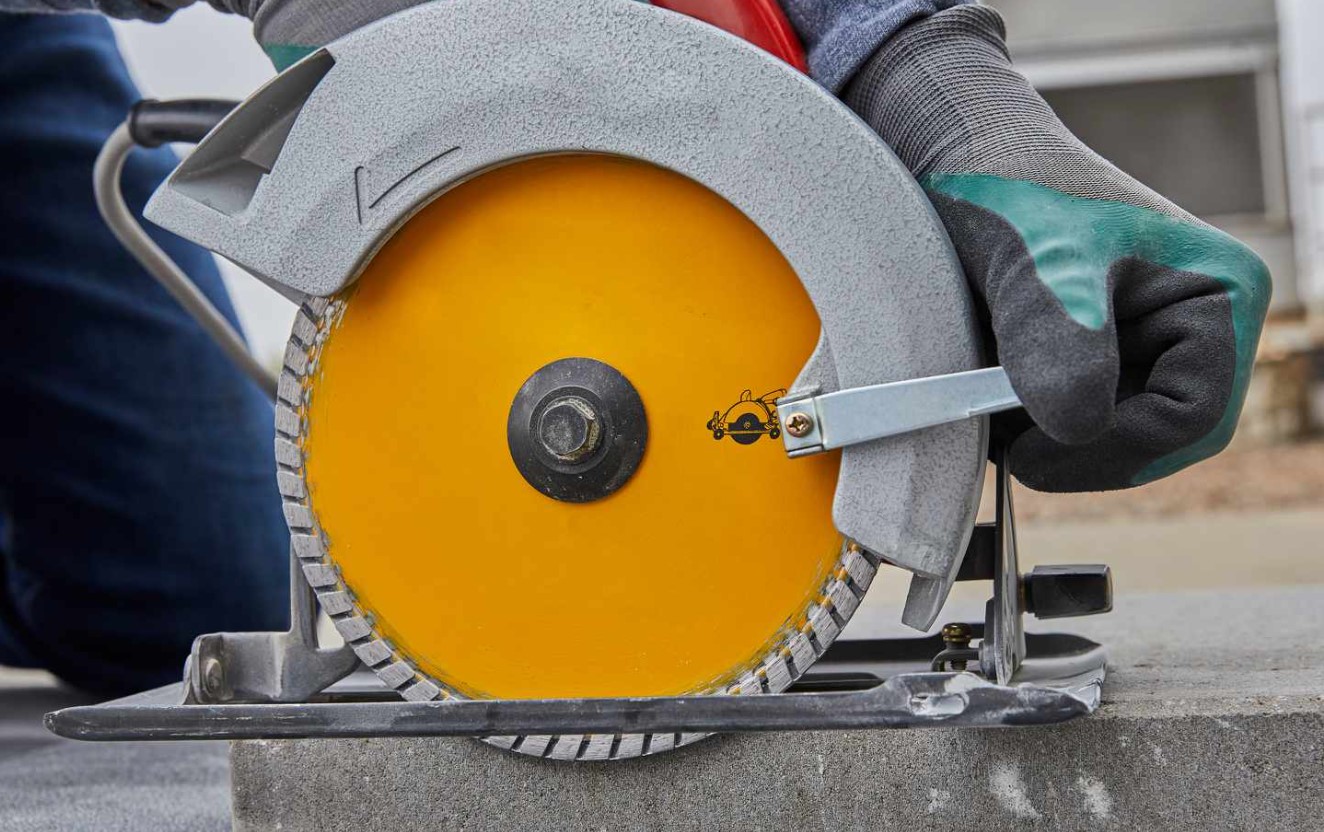
While cutting brick with a circular saw, you may encounter certain challenges. This section will address common issues, provide troubleshooting tips to overcome them, and offer additional tips for achieving precise cuts and avoiding mistakes.
Common challenges encountered while cutting brick:
a. Brick chipping or breaking: The brick may chip or break during the cutting process, leading to uneven or damaged edges.
b. Dust accumulation: Brick cutting generates a significant amount of dust, which can obstruct your view and affect the saw’s performance.
c. Blade overheating: Continuous cutting may cause the blade to overheat, reducing its effectiveness and potentially damaging the saw. d. Inaccurate cuts: Difficulty in maintaining a straight cutting line may result in inaccurate cuts and misaligned bricks.
- Troubleshooting tips for overcoming challenges:
a. To prevent brick chipping or breaking, consider:- Using a blade with a finer grit or a segmented diamond blade designed for cleaner cuts.
- Cutting the brick slowly and steadily, applying consistent pressure without forcing the saw.
- Supporting the brick adequately to minimize vibrations and potential breakage.
- b. To address dust accumulation issues, try:
- Using a wet cutting method by attaching a water source to the saw, reducing dust and keeping the blade cool.
- Wearing a dust mask and using a dust collection system or a shop vacuum to minimize dust in the work area.
- c. To avoid blade overheating, consider:
- Taking breaks between cuts to allow the blade to cool down.
- Using a blade designed for continuous cutting and suitable for high temperatures.
- Avoiding excessive cutting speed, which can cause the blade to overheat more quickly.
- d. For achieving accurate cuts, follow these tips:
- Use a straightedge or level as a cutting guide to maintain a straight and consistent cutting line.
- Ensure the brick is securely clamped and supported to minimize movement during the cutting process.
- Take your time and focus on maintaining control over the saw to achieve precise cuts.
- Additional tips for achieving precise cuts and avoiding mistakes:
- Double-check your measurements and markings before making any cuts to ensure accuracy.
- Start with smaller, practice cuts on scrap bricks to familiarize yourself with the saw’s handling and adjust your technique if needed.
- Regularly inspect the blade for signs of wear or damage. Replace the blade if necessary to maintain optimal cutting performance.
- Keep the saw’s motor and vents clean from dust and debris to prevent overheating and maintain efficiency.
- Follow the manufacturer’s instructions for blade maintenance, such as sharpening or replacing as recommended.
By implementing these troubleshooting tips and incorporating additional guidance for achieving precise cuts, you can overcome challenges and enhance your cutting experience with a circular saw. In the upcoming sections, we will address cleaning up the work area and maintenance tips for the circular saw, ensuring a safe and efficient cutting process.
Cleaning Up and Maintenance:
After cutting brick with a circular saw, proper cleaning of the work area and maintenance of the saw are essential. This section will discuss the importance of cleaning the work area, provide guidance on the proper disposal of brick fragments and dust, and offer maintenance tips to ensure the longevity of your circular saw.
- Importance of cleaning the work area after cutting: Cleaning the work area not only helps maintain a safe environment but also promotes efficient and organized workflow for future projects. Consider the following:
- Safety: Remove any brick fragments, dust, or debris to prevent tripping hazards and potential injuries.
- Equipment preservation: Cleaning the work area helps prevent brick fragments or dust from accumulating on or inside the circular saw, which could potentially impact its performance and lifespan.
- Aesthetics: A clean work area improves the overall appearance and tidiness of your workspace.
- Proper disposal of brick fragments and dust: When disposing of brick fragments and dust generated during the cutting process, follow these guidelines:
- Collect the brick fragments and dust using a broom, brush, or a shop vacuum equipped with appropriate filters for fine particles.
- Place the collected debris in a sturdy trash bag or container, ensuring it is securely closed to prevent dispersal.
- Dispose of the bag or container in accordance with local waste management regulations or guidelines.
- Maintenance tips for the circular saw to ensure its longevity: To prolong the lifespan and maintain the performance of your circular saw, consider the following maintenance tips:
- Regular cleaning: After use, remove any accumulated dust, debris, or brick fragments from the saw’s surface, motor vents, and blade guard. Use a brush or compressed air to clean hard-to-reach areas.
- Blade maintenance: Inspect the blade for any signs of wear, damage, or dullness. Sharpen or replace the blade as necessary to ensure clean and efficient cuts.
- Lubrication: Refer to the manufacturer’s instructions and lubricate any recommended points or moving parts of the circular saw to prevent rust and ensure smooth operation.
- Storage: Store the circular saw in a dry and secure place, preferably in a protective case or cover to shield it from dust, moisture, and potential damage.
By cleaning the work area, properly disposing of brick fragments and dust, and following maintenance tips for your circular saw, you can maintain a safe and efficient cutting environment while prolonging the life of your valuable tool.
In conclusion, by following the steps, safety measures, troubleshooting tips, and maintenance guidelines provided in this article, you are well-equipped to confidently cut brick with a circular saw. Remember to prioritize safety, adhere to proper procedures, and continuously refine your skills for optimal results. Happy cutting!
Advantages and Limitations of Using a Circular Saw:
Using a circular saw for cutting brick offers several advantages, but it’s important to be aware of its limitations as well. In this section, we will discuss the advantages of using a circular saw for cutting brick, mention any limitations or considerations, and reference relevant statistics or studies supporting the effectiveness of circular saws.
Advantages of using a circular saw for cutting brick:
- Speed and efficiency: Circular saws are known for their speed and efficiency in cutting through various materials, including brick. The powerful motor and sharp blade enable quick and precise cuts, saving time and effort.
- Accuracy and precision: Circular saws provide clean and accurate cuts, resulting in straight edges and tight fits for bricks. This level of precision is crucial for professional-looking brickwork.
- Versatility: Circular saws are versatile tools that can be used for various cutting tasks beyond brick. With the right blade, they can handle materials like wood, metal, and concrete, making them a valuable addition to your toolkit.
- Control and ease of use: Circular saws are designed with user control in mind. They feature ergonomic handles and adjustable cutting settings, allowing for better control and ease of use, especially during prolonged cutting sessions.
- Efficiency in handling larger projects: When working on larger brick projects, such as constructing walls or pathways, circular saws excel in terms of speed and handling substantial quantities of brick.
Limitations and considerations:
- Dust and debris: Cutting brick with a circular saw generates a significant amount of dust and debris. Proper safety measures, such as wearing a dust mask and using dust collection systems, should be taken to minimize health risks and maintain a clean work environment.
- Noise: Circular saws can be noisy during operation, requiring the use of ear protection to prevent hearing damage.
- Safety precautions: Due to the powerful nature of circular saws, it is crucial to follow safety precautions and operate the tool with care to prevent accidents or injuries.
- Cost: Circular saws can be an investment, especially for high-quality models. Consider your budget and frequency of use before making a purchase.
Relevant statistics or studies supporting the effectiveness of circular saws for cutting brick: While specific statistics or studies on circular saws for cutting brick may be limited, the effectiveness of circular saws in general for cutting various materials has been well-documented. Circular saws are widely used in construction and woodworking industries, showcasing their efficiency, accuracy, and versatility.
It is always recommended to refer to trusted sources, manufacturer guidelines, and professional recommendations when selecting and using circular saws for specific applications.
By understanding the advantages and limitations of using a circular saw for cutting brick, you can make informed decisions, ensure safety, and maximize the tool’s effectiveness in your brickwork projects.
In conclusion, circular saws offer numerous advantages, including speed, precision, versatility, control, and efficiency for cutting brick. However, it’s important to be mindful of considerations such as dust management, noise, safety, and cost. By considering these factors and leveraging the benefits of circular saws, you can achieve excellent results in your brick cutting endeavors.
Conclusion:
In this article, we have explored the process of cutting brick with a circular saw, emphasizing its advantages, necessary tools, safety measures, and maintenance tips. Let’s summarize the main points covered:
- Understanding the Basics: We discussed the concept of cutting brick with a circular saw, its suitability for the task, and the advantages it offers over other tools.
- Essential Tools and Materials: We provided a comprehensive list of necessary tools and materials, including safety equipment and suitable blades for cutting brick.
- Preparing for the Task: We emphasized the importance of preparing the work area, accurate measuring and marking of the bricks, and ensuring stability and support during cutting.
- Safety Measures: We highlighted the significance of following safety measures, using personal protective equipment (PPE), and handling the saw while maintaining a safe distance from the blade.
- Step-by-Step Procedure: We outlined a step-by-step procedure for cutting brick with a circular saw, providing detailed explanations, tips, and techniques for each step.
- Troubleshooting and Tips: We addressed common challenges encountered during cutting, provided troubleshooting tips, and offered additional tips for achieving precise cuts and avoiding mistakes.
- Cleaning Up and Maintenance: We discussed the importance of cleaning the work area, proper disposal of debris, and maintenance tips for the circular saw to ensure its longevity.
- Advantages and Limitations: We highlighted the advantages of using a circular saw for cutting brick, mentioned limitations to consider, and emphasized the importance of safety precautions.
In conclusion, when cutting brick with a circular saw, it is crucial to prioritize safety, follow proper procedures, and use the appropriate tools and equipment. Regular practice and refinement of your skills will contribute to better results over time. Remember to adhere to safety guidelines, wear necessary protective gear, and continuously improve your techniques.
By utilizing the information provided in this article, you are equipped with the knowledge and guidance to confidently and safely cut brick with a circular saw. Now it’s time to put your skills into action and embark on successful brick cutting projects. Happy cutting!